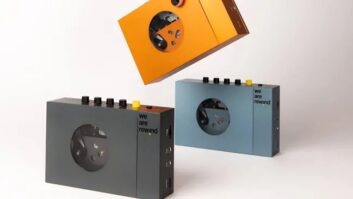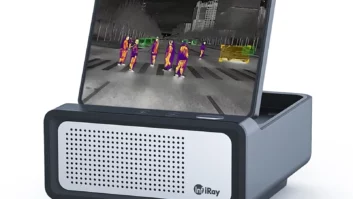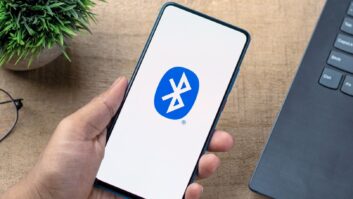The Bluetooth special interest group stepped closer to finalizing a car Bluetooth specification that will let cellular phones connect wirelessly with an in-car hands-free system, even if the phone stays inside a pocket or purse.
Bluetooth-enabled products automatically form a 1Mbps wireless network once they’re within approximately 33 feet of one another.
The car spec is at the 0.95 level, a preliminary step to let manufacturers begin product testing. “After doing some testing, and when we’ve seen multiple implementations, we’ll revise it to a 1.0 level,” said Simon Ellis, chairman of the marketing committee for the Bluetooth Special Interest Group. He expects finalization to occur in 2002.
“[Car makers have found that] providing hands-free cellphone usage in a car is particularly difficult with a built-in cellphone cradle because there are so many types of cellphones,” Ellis said of the spec’s mission. “Also, a customer might have a different cellphone two months or two years from now.”
The new specification will also let autosound and automotive suppliers embed Bluetooth hands-free capability in car audio systems. When mated with voice-control and text-to-speech conversion technology, Bluetooth will let drivers voice-dial their phone, talk on the phone, use voice commands to access wireless-Internet sites, and have wireless-Internet information read back to them — even if their phone sits in their pocket or purse.
“The traveler can just sit with his cellphone in his pocket and control it from the car. Now it doesn’t matter what type of cellphone I have,” said Ellis.
Suppliers are expected to add noise- canceling circuitry and maybe a display to their hands-free systems.
Chrysler is the first automaker to announce its support for the new spec. It will offer a Bluetooth-based communication system in vehicles in early 2003, and in spring 2002 via car dealers. (See page 26 for the Chrysler story.)
Many suppliers also foresee car radios that, via voice command, will access a Bluetooth PDA’s phone book, then command the PDA to dial a number from its database.
Several aftermarket car stereo companies say they are very interested in employing Bluetooth technology in car radios and car navigation systems.
Alpine, for example, hopes to showcase a prototype Bluetooth navigation system at CES in January. Product promotion manager Todd Van Zandt said Alpine sees Bluetooth wirelessly synchronizing a PDA address book with a navigation system’s destination list.
“There’s going to be a big rise in convergence. You’re going to see more telematics elements with navigation being a central hub. So we’re looking at being able to plan routes on your PDA and drop the route into your navigation system. Bluetooth looks like the strongest candidate for this.”
Pioneer is also examining Bluetooth integration with car audio and navigation systems, said product planning VP Keith Burnett. One possibility: A cellphone could send caller ID information to a Bluetooth car radio, which could read out the name of the incoming caller and then mute the radio.
Blaupunkt director of engineering Jim Frazier also sees Bluetooth’s advantage in the car. “You want to keep things integrated and don’t want to be unplugging and plugging things while you are driving. As converging devices [PDAs and cellphones] become more prevalent in the car, a wireless technology such as Bluetooth will become increasingly more important,” he said.
Panasonic national marketing manager Rob Lopez said Bluetooth might enable a home PC to talk to a car radio to exchange compressed music files. When the car pulls into the driveway, the home PC might automatically recognize the car radio and transfer an updated selection of music files to the car audio system.
The car working group of the Bluetooth SIG is studying other Bluetooth applications beyond wireless-phone applications. “For the longer term, we’re looking at providing a link for diagnostics into the car, a link with computer equipment for appointment scheduling that could be displayed in the car or linked to a navigation system in the car,” Ellis said.
The basic Bluetooth spec, which has a data throughput of 1Mbps, allows for the following:
- wireless file transfer,
- headsets that wirelessly connect to audio products or wireless phones,
- and automatic synchronization, enabling transfer of PIM data from a PC to a PDA.
The Bluetooth SIG is currently working on addition specifications for defining printing (i.e., directly from a cellphone to a printer or from a digital camera to a printer).












